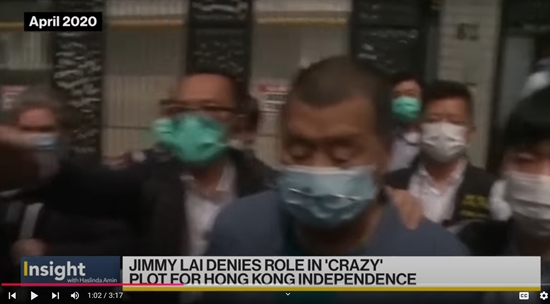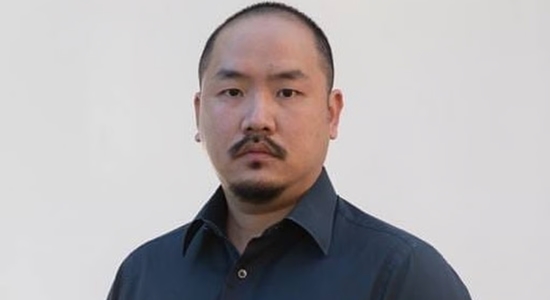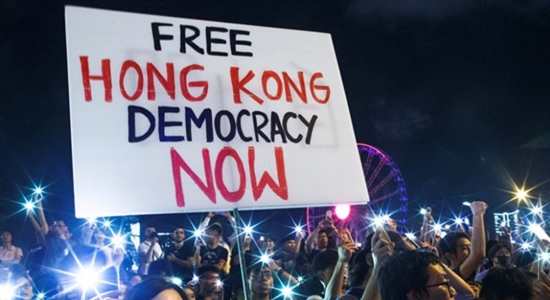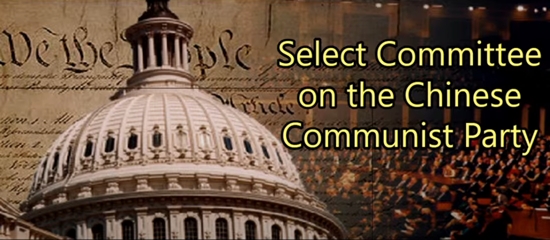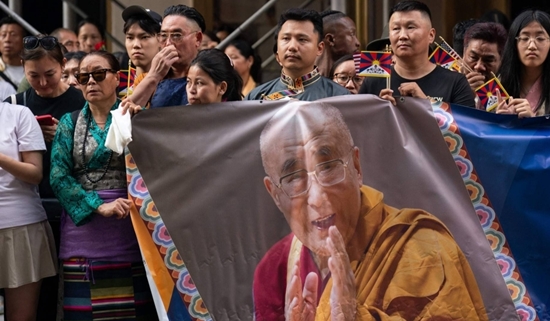
It would like to. The Dalai Lama who was around in 1950 when China invaded Tibet and added Tibet to its “autonomous” regions is still with us. For decades, the man who is the current Dalai Lama has been a symbol of hope and of resistance to China’s oppressive rule. He is not the guy the Chinese Communist Party would have picked for the job.
But the 88-year-old spiritual leader of Tibet—disparaged by the Chinese Communist Party as a “separatist” despite his apparently unconvincing insistence that he is “not in favor of separation”—probably won’t be around very much longer. He has just come to the United States to receive medical treatment (CBS News, June 24, 2024). He has knee trouble.
In New York City, the Dalai Lama was met by a crowd of well-wishing Tibetans living there and perhaps other local residents (shown above).
Earlier in the month, he met with a U.S. congressional delegation in India, to which he had fled in 1959 after Tibet’s unsuccessful revolt against communist rule. During their visit, the congressmen also spoke with “officials from the Tibetan government-in-exile, which wants more autonomy for Tibet.” And they told a crowd gathered near the home of the Dalai Lama that “a key purpose of their visit was to discuss the Resolve Tibet Act, which aims to encourage dialogue between the Dalai Lama and Chinese officials, with the hopes of finding a peaceful resolution between Tibet and Beijing.”
The Resolve Tibet Act has made it through Congress and now awaits the signature of President Biden.
Meanwhile, Brahma Chellaney, a professor of strategic studies at the Center for Policy Research in New Delhi, is arguing in commentary for Project Syndicate that “China must not choose the next Dalai Lama; The U.S. and India should stop Beijing from hijacking the selection” (The Japan Times, June 24, 2024).
Tibetans regard the Dalai Lama as the living incarnation of Buddha, with a total of 13 reincarnations since 1391. When one Dalai Lama dies, the search for the next one begins, with a council of senior disciples taking responsibility for identifying the figure based on signs and visions. But in recent years, the Chinese government has insisted that only it has the right to identify the next Dalai Lama.
This would not be the first time China selected a leader of Tibetan Buddhism. In 1995, it anointed its own Panchen Lama, whose spiritual authority is second only to that of the Dalai Lama, after abducting the actual Panchen Lama—a 6-year-old boy who had already been confirmed by the Dalai Lama. Almost three decades later, the real Panchen Lama is among the world’s longest-serving political prisoners.
Chellaney wants President Biden to meet with the Dalai Lama while he’s in the United States and wants the U.S. to work with India “to devise a multilateral strategy to counter Xi’s plan to capture the more than 600-year-old institution of the Dalai Lama.”
But the author seems to conclude that it’s mostly up to the Dalai Lama, whom the U.S. and India should persuade “to spell out, once and for all, the rules that must be followed to identify his successor.”
If the Dalai Lama’s announcement of such rules is the main way to head the CCP off at the pass, he presumably knows this already. Why would he need the United States and India to say so?
If he agrees, though, he should stop procrastinating. He’s not going to live forever.
